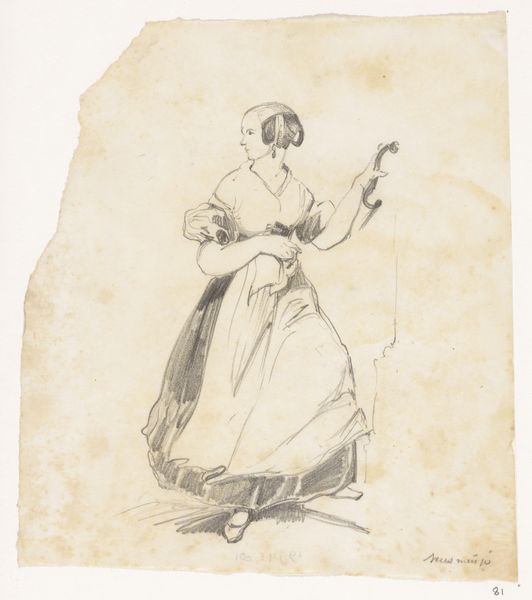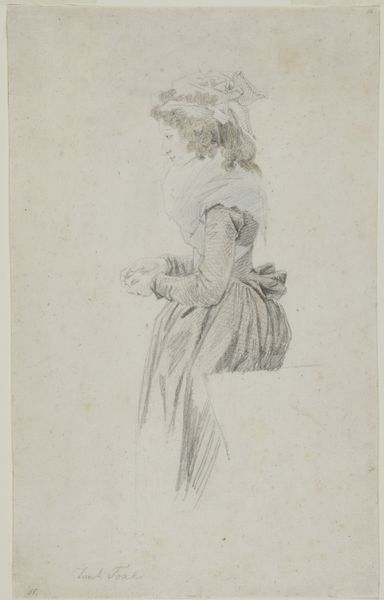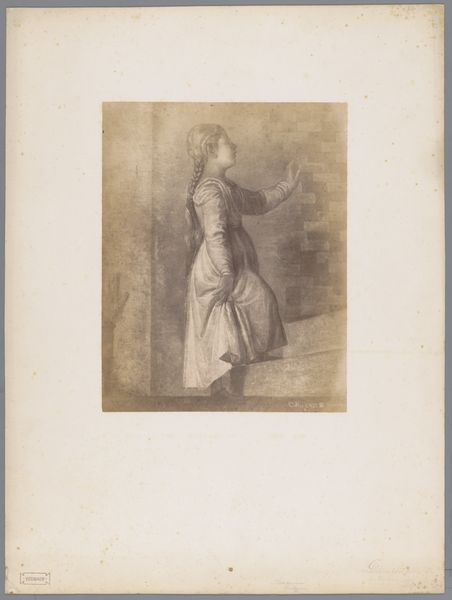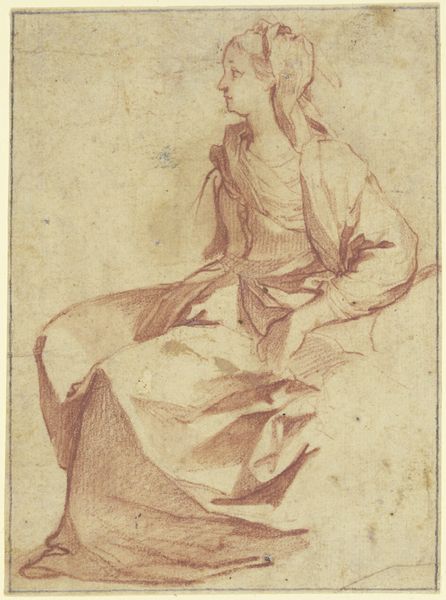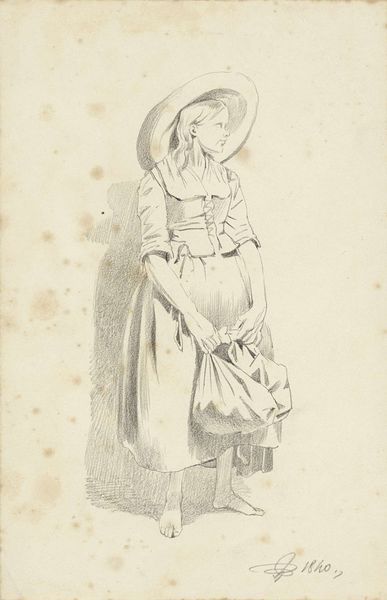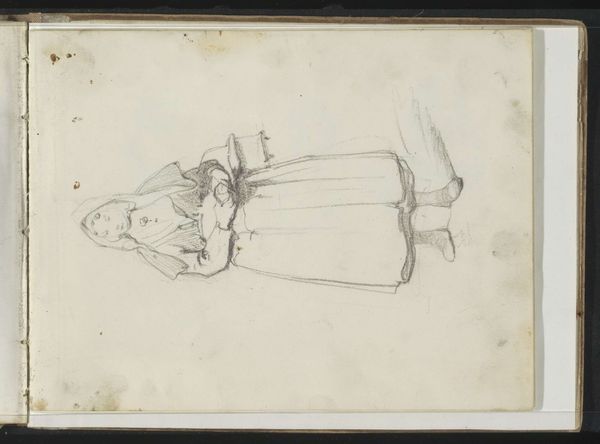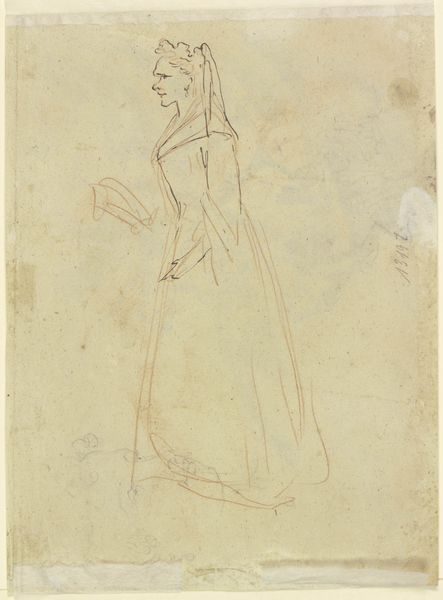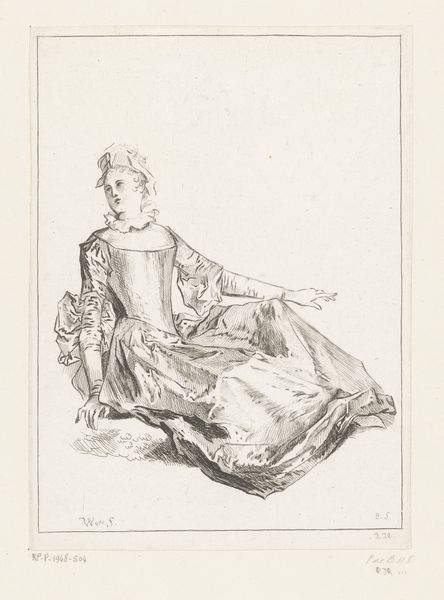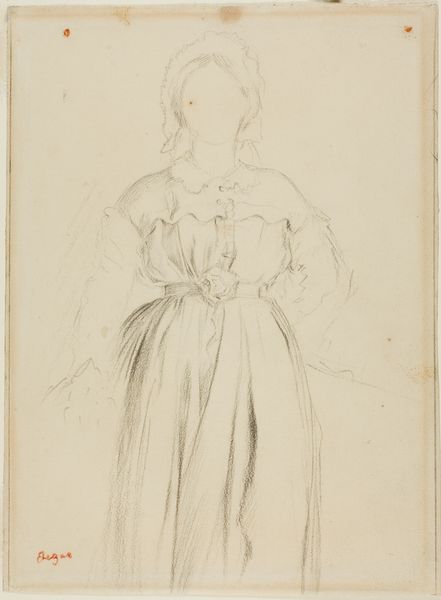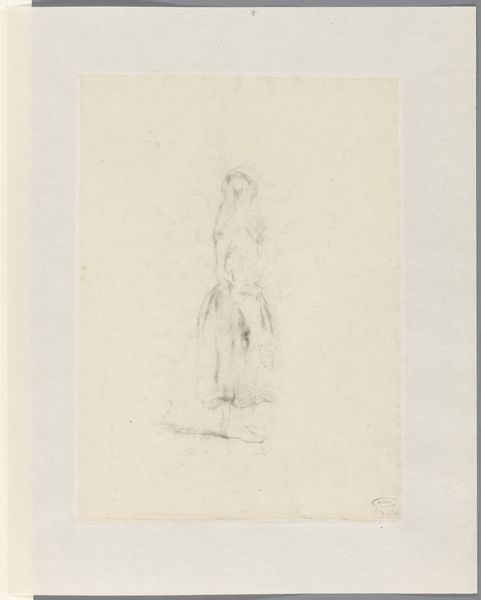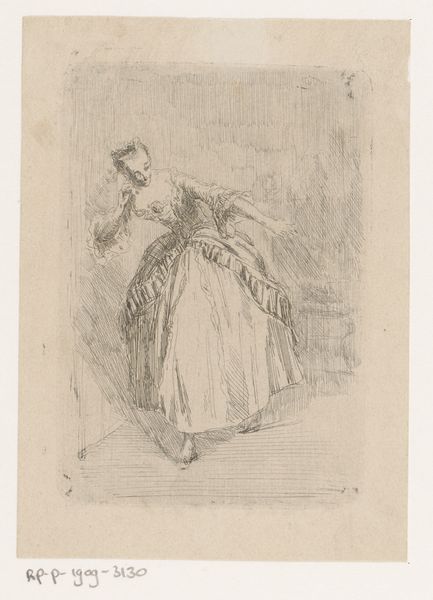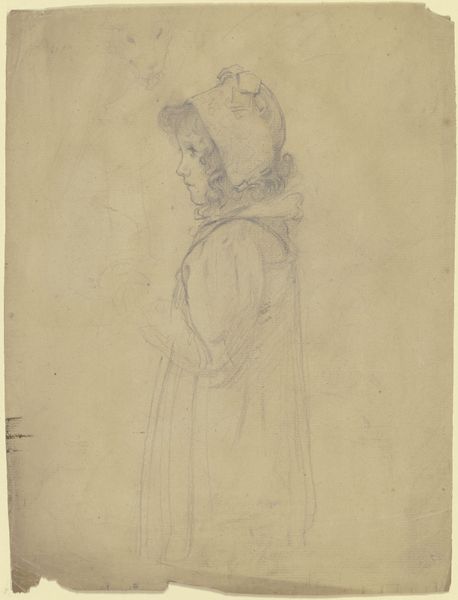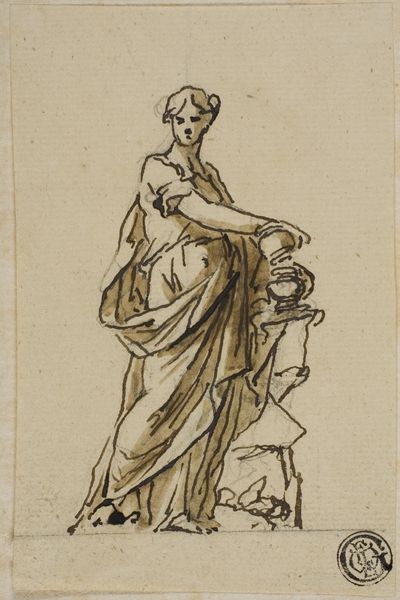
drawing, paper, pencil
#
portrait
#
drawing
#
pencil sketch
#
figuration
#
paper
#
romanticism
#
pencil
#
history-painting
Dimensions: height 246 mm, width 177 mm
Copyright: Rijks Museum: Open Domain
Editor: This drawing, "Figuurstudie van een vrouw op de rug gezien," created in 1806 by Wouter Johannes van Troostwijk, offers an intimate glimpse into the artist’s process. It is currently housed in the Rijksmuseum. The simplicity of the pencil on paper gives it an ephemeral, almost dreamlike quality. What can you tell me about it? Curator: It’s fascinating how a seemingly simple sketch can reveal so much about the socio-political context of its time. Consider the artist's decision to depict the woman from behind. What message does this convey to the public in terms of the representation and role of women at the turn of the 19th century? Editor: It makes me think about privacy and access… Was this common, or were portraits generally commissioned and posed? Curator: Exactly. Portraiture at this time was largely dictated by patronage. This sketch could be interpreted as a subtle form of social commentary. By choosing this subject and viewpoint, Troostwijk is making choices about whose stories are worth telling, and how they are told. Does the Romantic style influence that choice? Editor: Definitely. Romanticism focused on individual emotion and experience, perhaps giving validity to more personal, less public, images. I hadn’t thought of it that way before. Curator: It’s also interesting to note the location. Its place within the Rijksmuseum connects to broader institutional forces which shape which art is deemed valuable to preserve. Ultimately affecting how we view both the artist and his sitter's place in history. Editor: This makes me rethink what seems to be simply an unassuming figure study; I now see many different levels of societal contexts. Curator: Precisely, understanding the art historical context enhances our comprehension and appreciation.
Comments
No comments
Be the first to comment and join the conversation on the ultimate creative platform.
